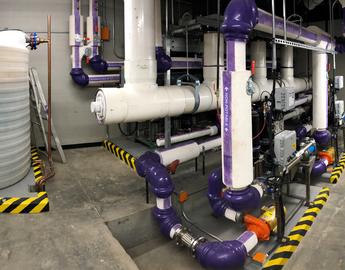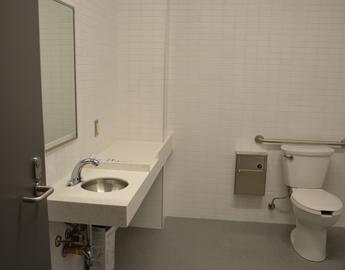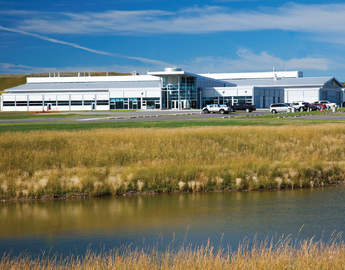
Water

Drinking water
Water fountains and refill stations located throughout campus make refilling easy. In addition to reducing the number of plastic water bottles that end up in our ocean, water from the City of Calgary is usually purer and cleaner than bottled water — it gets tested more than 150,000 times in a world-class water treatment and testing facility.



Conserving potable water
UCalgary has lowered its overall usage of potable water through careful planning and demand management strategies. UCalgary is currently projecting to avoid the use of 4,800 m3 of potable water through rainwater capture annually.
Key initiatives include:
Water efficiency is a key focus in new facility designs and construction. All new major capital projects incorporate water efficient fixtures aligned with campus design guidelines and the water efficiency standards of the LEED Green Building Rating System.
- Most new capital projects incorporate water recovery and reuse strategies to minimize the use of potable water for grey and black water purposes. The MacKimmie and EEEL building collect rainwater and snowmelt from rooftops to be used for toilet and urinal flushing. MacKimmie’s design includes a 150,000 litres cistern for toilet and urinal flushing, which offsets more than 2.7 million litres of potable water for toilet and urinal flushing.
- Other buildings such as the Child Development Centre, have been designed to use recycled process water from the central heating and cooling plant to flush toilets and reduce potable water consumption.
- Naturalization of campus open spaces restores native grasslands with significantly reduced irrigation requirements, with stormwater ponds designed to accommodate up to the 98th percentile of storm events.
- Non-potable water from the Bow river is used across main campus for irrigation.
- Water meters were installed across campus in 2017 to monitor building water usage. Domestic water usage is monitored daily and changes in use are flagged and investigated.
- The water efficiency retrofit program replaced many original and inefficient fixtures and faucets across campus, dramatically reducing potable water use in existing buildings.
- Bottle refill devices are standard on all new water fountains. More than 40 existing water fountains were retrofitted with bottle filling devices.
Clean water for our campus and community
Water Partnerships
The University of Calgary is creating a ripple effect through its research, community and organizational partnerships. By leveraging institutional resources and building relationships, UCalgary is helping to address water security and sanitation issues on local and global scales.





